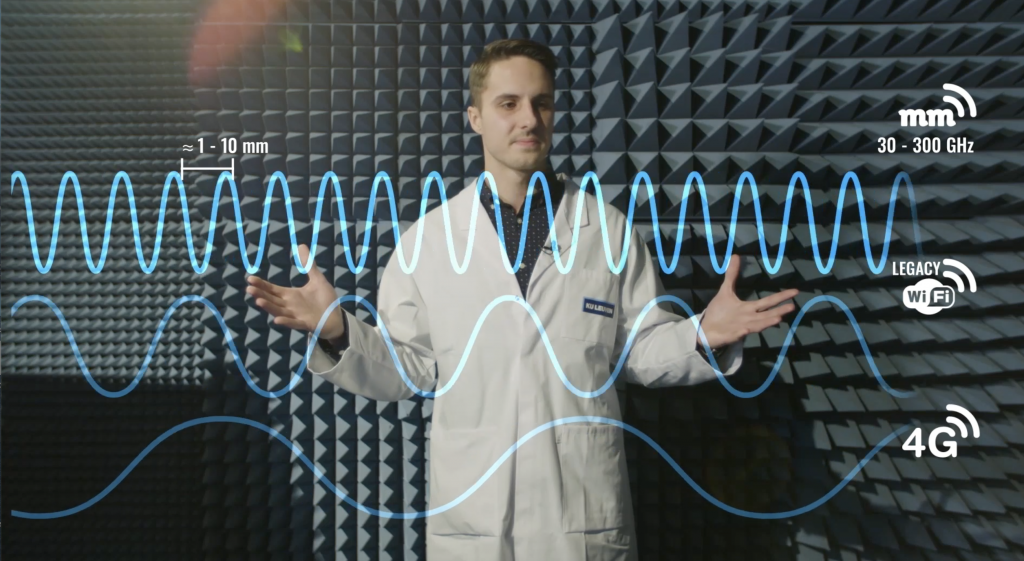EU MSCA ETN MINTS is happy to present an introductory video about their research, explaining about B5G applications and how they will impact our future daily life.
We are all getting used to mobile video, useful for supporting our favorite applications from Netflix to YouTube to Zoom or Teams meetings. More is possible with digital communication technology, such as immersive experiences, virtual and augmented reality, safe autonomous cars, and the Internet of Things. To enable these demanding applications, wireless technology will have to rely on the mmWave spectrum. While this part of the spectrum has the potential to carry up to 100 times more bits than possible with currently used spectrum-frequences, these fragile frequencies were not yet used to date as they are simply absorbed by the oxygen in our atmosphere, and blocked by all obstacles larger than a few millimeters. What point in using such fragile technology? They can carry a massive amount of bits, …until… they travel through the air filled with oxygen? The MINTS researchers are finding solutions to work around these limitations. This video explains everything you need to know about using and enabling mmWave communication.
The European Training Network MINTS aims at a technology for mmWave networking and sensing beyond 5G. This beyond 5G technology will give us even larger capacity, more diverse applications, such as very precise indoor location and radar, in addition to communication. However, there are challenges!
The project provides a concerted effort to overcome the challenges by:
1) building up a highly skilled labour force in the mmWave technology sector;
2) mitigating the impact of network dynamics and density on the performance and resilience of mmWave networks; and
3) advancing mmWave technology in order to leverage it in emerging EU and international markets.



